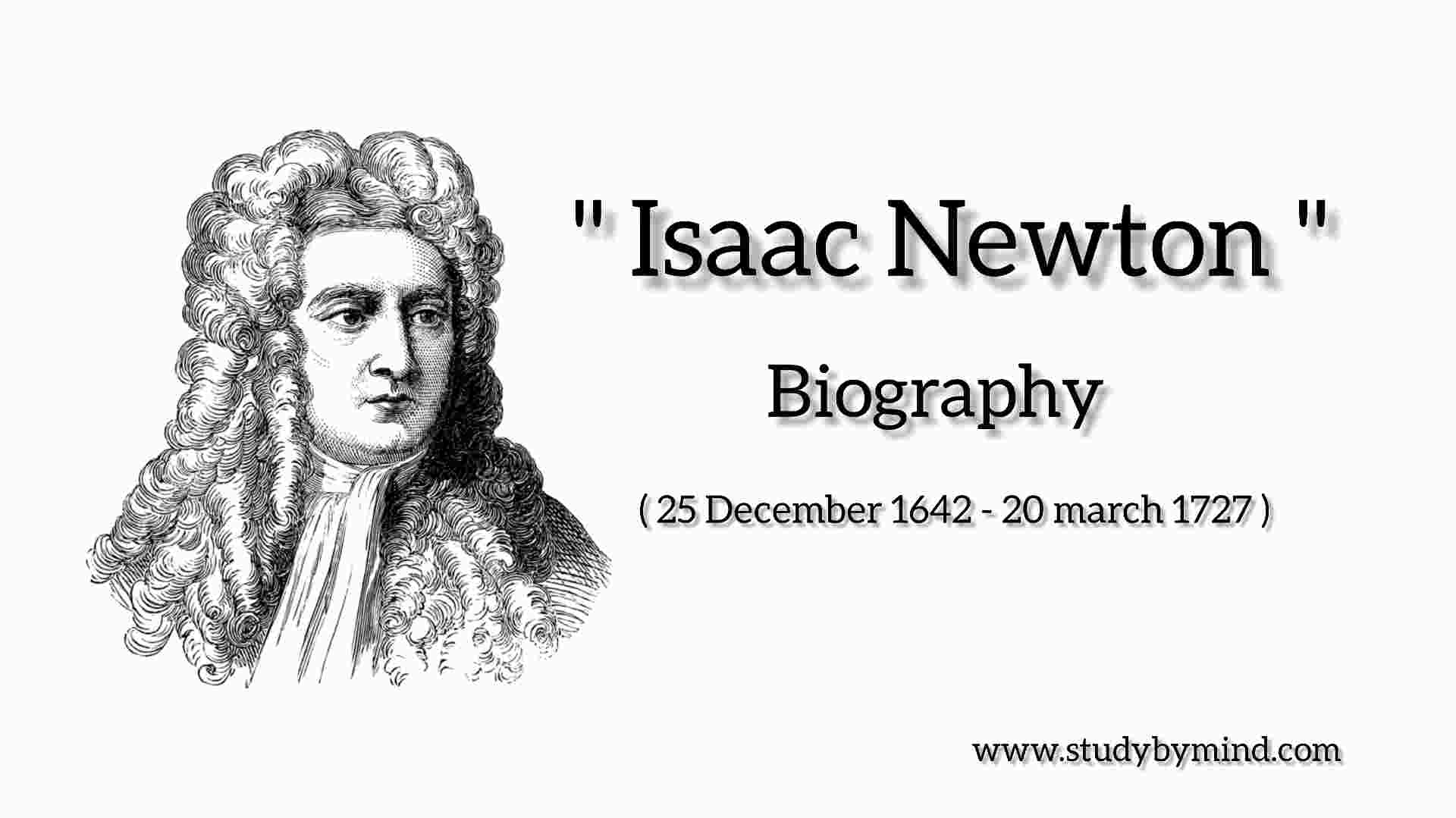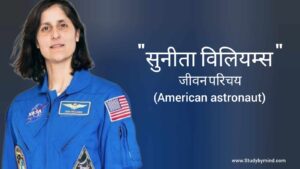Isaac Newton
Sir Isaac Newton was the greatest scientists and mathematicians. Isaac Newton Biography and Newton’s Laws of Motion. Newton invented an important and new mathematics called “calculus”.Mathematicians,scientists and engineers still use him.Many people criticized his theories, but Newton laid a firm foundation for the understanding of gravitational-force and motion. Isaac Newton is still remembered and respected for his achievements.Let us introduce you to his life-
आइजैक न्यूटन जीवन परिचय हिंदी में – “ Click here “
- Name: Isaac Newton
- Date of Birth: 25 December 1642
- Nationality: English
- Place of Birth: Woolthrop by Colsterberth, Lincolnshire, England
- Parents Name: Isaac Newton (1606-1642) Hannah Isaac Newton Smith (?-1679), Barnabas Smith (Stepfather) (1582-1653)
- Siblings: Mary Smith Pilkington (Half-Sister) (1647-?) Benjamin Smith (half-brother) (1651-?)
- Date of Death: 20 March 1727
- Burial place: Westmeister Abbey, London
- Field of study: Physics, Mathematics
- Contribution: Newton’s Laws of Motion, Laws of Science: Universal Gravitation, “Calculus”
- Awards and Honors: Awarded “Night-Good” by Queen Anne, President of the Royal Society.
Newton’s early life and birth
Isaac Newton was born on 25 September 1642 in Woolthrop by Colsterberth, Lincolnshire, England. Newton’s father’s name was Isaac Newton, a sheep farmer who died three months before Newton was born. Newton was born nine months earlier, so Newton was very weak and his life expectancy was very less. When Newton was 3 years old, his mother Hannah remarried and after that she left. Newton had to be alone in his childhood, due to which he used to be very sad. His mother, Hannah, remarried, after which she went to live with her new husband Barnabas Smith. The new husband did not allow her to bring Isaac along. Hannah left her son Isaac with her maternal grandmother, so Isaac saw little of his mother, Hannah (Newton’s mother) had three more children with her new husband.
Newton’s education
Isaac Newton studied at the local school in the neighborhood, according to the teachers there, Newton was too lazy and paid little attention to studies. Isaac started studying at Grantham’s King’s School. Isaac learned many subjects there but did not learn mathematics because mathematics was not taught there. Isaac found studying at Grantham’s School very boring. When Isaac was 17 His mother asked him to leave King’s School when he was a year old. She wanted Isaac to become a sheep farmer like his father. Isaac was not happy with his mother’s decision and did not succeed as a farmer. The next year, Isaac’s mother sent him back to King’s School. Isaac in a Year Prepared to go to Trinity College which was part of the University of Cambridge.University students studied ancient Greek, philosopher, Aristotle, but Newton wanted to read about new ideas Newton on his own studied the ideas of modern philosophers and scientists of his era (time) – Descartes, Copernicus and Galileo Then Isaac earned a bachelor’s degree from the University of Cambridge in January 1665. He was greatly admired by Newton’s professor of mathematics. In 1669 his professorship resigned, asking for his position to be given to Isaac, after which Newton became professor of mathematics at Trinity College.
Do you know? Someone engraved the name “I” Newton on a window of the King’s School, it is believed that Isaac was the one who carved it.
Newton an inventor
Isaac Newton was not only a physicist and mathematician. but was also an inventor. Some of his inventions are still used today – such as the “reflector telescope” which used a mirror. The use of mirrors made the telescope better than curved lenses. Newton’s telescope was particularly great for observing clusters of stars. High-quality lenses were important to Newton. He showed in an experiment that if a lens and a glass plate were to shine light at a fixed corner, rings of light were formed. These are called “Newton rings”. It is still used today to test the surface quality of lenses.Newton created a formula—the lens equation—that describes the distance at which a lens will focus light. That formula is used to make all instruments of binoculars, microscopes, reading glasses and lenses. Newton was the first scientist to describe a “sextant,” a device that could be used to determine its position in the ocean by seafarers many years after it was built.The world is indebted to the scientific and mathematical genius of Isaac Newton, who gave valuable information to the world and forever changed the way people viewed science and mathematics.
Newton’s laws of motion
Isaac Newton is perhaps best known for his three laws of motion. This law explains what happens when an object is in motion or when it is stationary. He described his law of motion in “The Principia” Newton’s three laws.Something like this-
first rule
Newton’s first law of motion is also called “law of inertia”. Inertia means resistance to change in motion. In simple language, this law of motion states: Any object which is stationary or which is moving rapidly in a straight line will remain the same as long as there is no external force acting on it Newton meant that until a new force acts on an object. As long as it does not push or push, the speed of that object will not change, things that are stationary will still remain stationary. According to Newton’s first law, the speed of a bicycle will not change unless an external force, such as a brake, changes it.
second law
Newton’s second law of motion is often called the “law of acceleration”. According to him, the change in the speed of an object depends on the amount of force applied to it, the direction of the force, and the mass of the object. pushes or pulls another object then what happens then the stronger the force the faster or slower the object will need a stronger force to accelerate or move a heavy object for example a bicycle compared to a car According to this rule, any object will move in the same direction, in which direction the force will be acting.
third law
Newton’s third law of motion is the law of action and reaction, according to this law Every action has an equal and opposite reaction Newton explained that when a force pushes an object, that object pushes the force back in the direction distributed. That’s why we are able to propel the water in the boat. Water also pushes the paddle back as hard as the paddle pushes the water, so that the boat moves forward. When you hit the ball with the bat, the bat not only pushes the ball, but the ball also pushes the bat.
Newton’s Awards and Achievements
In 1696, Newton was put in charge of the Royal Mint, where British coins were made, his job was to make old hand-made coins now by machines. Newton’s job was also to catch thieves who made counterfeit coins. 1705 Newton’s service at the mint In honor, Queen Anne of England bestowed the title of “knight” on him and became Sir Isaac Newton. Became President of the Royal Society in 1703, the Royal Society promoted excellence in scientific research.
Newton’s death
Isaac Newton died on 20 March 1727 at the age of 84, and was buried in Westminster Abbey, London, where many of his then-important British monarchs were buried.
Isaac Newton’s work
- 1661 Studied at Trinity College at Cambridge University.
- In 1655, he started research on gravity, calculus and light at Cambridge University.
- In 1668 Cambridge University received a master’s degree.
- Became Professor of Mathematics in 1669.
- Became a member of the Royal Society in 1672.
- Mother’s death in 1679
- In 1684 the work of Calculus was published.
- In 1687 the Principia was published.
- In 1696 he became in charge of the Royal Mint (mint).
- IN 1705 “Knight Hood” honor by Queen Anne.
Related Topic-
- Click here to know more about Isaac Newton –“Click here“
- Morarji Desai Biography- “Click here”



